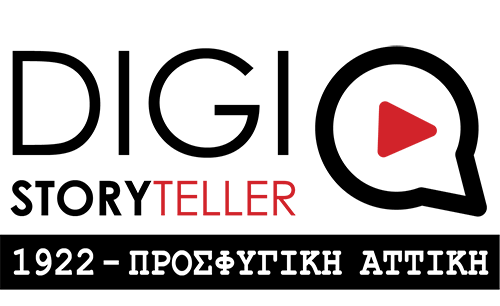“A new age begins for everyone”
- What does a well-off Smyrmiot see as he arrives in the new capital before the Asia Minor Catastrophe?
In 1920, Athens was still a small to medium-sized city, with extensions and new buildings mostly towards the road of Patision Street, and still at a significant distance from Piraeus and the few suburban districts. Kallithea, Chalandri, and Marousi were rural suburbs, and downtown Athens was dense with activity. There were few buildings higher than three floors, most of them were two-floor high. Buildings with four floors became more frequent after 1923; as a consequence, the dominant impression is that of low height skyline. There are few cars in circulation. Athens is a somewhat compact, self-contained city, pleasant to look at, and with intense contradictions. The problem with irrigation is still immense. Neighborhood streets, as well as many central roads, were still unpaved. Social life was centered around the squares of Syntagma and Omonoia, and the streets of Panepistimiou and Stadiou. Athens still retained the urban life model that was established during the period from 1890 to 1910. The mansions still stood along the streets of Vasilissis Sofias (then Kifisias) and Amalias. Egyptou Square, near the National Archaeological Museum of Athens, had become one of the most privileged residential areas.
- What does a family of Asia Minor Greeks sees in its struggle to survive, when, devoid of any belongings, it is pushed from Piraeus to Athens in September 1922?
A picture of general mobilization, commotion, and volatility. Piraeus had yet to be united with Athens. The natives of Old Greece had mixed feelings for the newly arrived population: compassion, curiosity, discomfort. It was certain that a new age was beginning for everyone. Athens already had many unsolved problems of its own, such as the issues of irrigation, cleaning, lighting, and infrastructures in general. This escalates even more with the arrival of refugees, a change which, in turn, speeds up the management of long-standing issues. Refugees frequently go through medical tests, or even quarantine. Many accuse them of carrying epidemic diseases. Hygiene is one of the first issues. The refugee problem triggers the policy in favor of (public) health. Many refugees, with no belongings, are pushed to makeshift settlements or arid locations (remember Ilias Venezis’s description of Anavyssos in “Serenity”). There is a clear separation, as well as a different fate, for those who were in a better financial situation. Many poorer refugees were initially pushed to requisitioned schools and public buildings (e.g. the Municipal Theatre of Athens), where hygiene conditions were problematic.
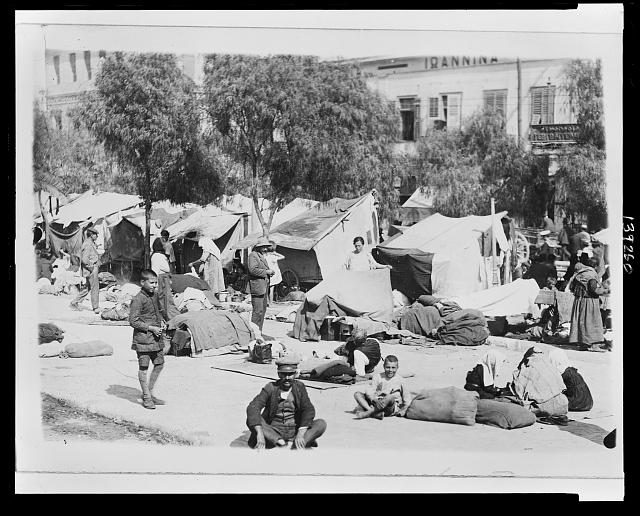
Δρόμοι της Αθήνας κατειλημμένοι από μικρασιάτες πρόσφυγες, © Βιβλιοθήκη του Κογκρέσου/
Athens 1922: “The metropolitan area begins to take shape and acquire a specific function”
- Which other spatial and institutional changes were introduced in Athens and instigated after the coming of the refugees?
Athens was forced to speed up procedures that were already the subject of discussions: the city’s expansion through new townships and suburbs, the provision of motives for cheap residence, social policy for housing, collaboration with international organizations, and choice of location for new cottage and large industries. The issue of housing becomes crucial. Refugee settlements at all levels (from Nea Smyrni to Kaisariani) coexist with the new suburbs of well-off citizens, such as Psychiko and Ekali, which were founded during the same period. Around the same time, in the late 1920’s, the movement for the development of Glyfada becomes organized. The concept of horizontal ownership, which hatched the idea of apartment buildings with regulations, was legally regulated in 1929, which is also the year when the Marathon dam was inaugurated. The metropolitan area starts to take shape and acquire a specific function.
“… The concept of horizontal ownership, which hatched the idea of apartment buildings with regulations, was legally regulated in 1929…”
- The later urban sprawl of the metropolitan area of Athens is caused by and rooted in the period of its development, due to the arrival and settlement of refugees?
I would say that Athens’s sprawl is a phenomenon that existed since the 1830’s, it is just that it took gigantic proportions and blew up after 1922. The population boom of the 1920’s accelerated the expansion of the city, generated suburbs and illegal townships, intensified social diversification and set a pace for the construction of the city through the replacement of older buildings and the raising of new ones. The concept of reconstruction, as we understand it in terms of the post-war cities, largely began during the 1920’s and took off in the 1930’s, when demolitions of 19th century buildings became commonplace. The arrival of the refugees magnified issues that already existed (urban sprawl with lacking infrastructures) and generated new conditions (unification of Athens and Piraeus, development of a multitude of neighborhoods and suburbs).
“The population boom of the 1920’s accelerated the expansion of the city, generated suburbs and illegal townships”

Υποχώρηση ελληνικού στρατού/ © Bibliothèque nationale de France
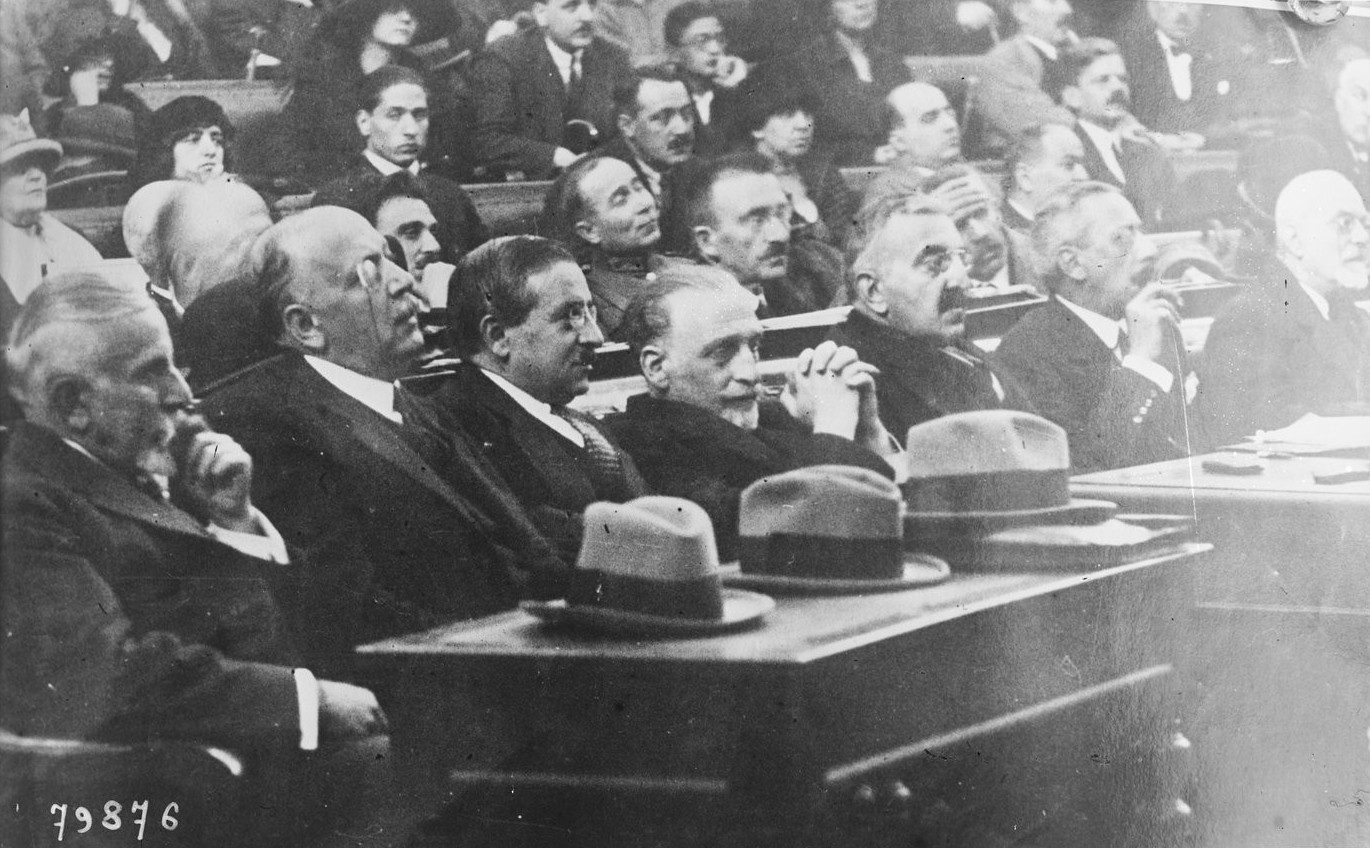
Δίκη των εξ/ © Bibliothèque nationale de France
- What other important events are happening at the same time in the decade from 1922 to 1932?
This is an era of major changes. After the Catastrophe, the Treaty of Lausanne, the population exchange, and the Trial of the Six, the Greek society attempts to recollect itself under different conditions. The shattering of the Great Idea and Athens’s rise to prominence as the center of Hellenism, with an aspect that did not exist before 1922, mobilized many forces. We can say that an age of great urbanization that is simultaneous with the intensification of industrial production. Social stratification is becoming more complex. The workers’ movement is on the rise. The society, after the national schism of 1915-1916, presses on, albeit with a fractured psychology and ideology. The period of the uncrowned democracy (1924-1935) reflects the political trend after the Catastrophe, although this does not mean that the society had moved on from the schism. The steady rise of totalitarian ideologies in Europe after 1920 will not leave the Greek political landscape unaffected.
“…Refugee housing architecture is nowadays, for the most part, swept away…”
- Should refugee houses – what is still left of them – in different township and areas of Attica be preserved?
A few enclaves exist, such as, for example, in Nikaia, and scattered in other parts (Vyronas, Kaisariani, Drapetsona, Nea Filadelfeia, Tzitzifies, Hymettus, Tavros, and others) which help us understand how a refugee settlement looked like. It is certain that many important samples of this architecture have been lost, and this is an architecture of enormous historical, sociological, and anthropological value for the development of Athens and Piraeus over the course of the past century. It would certainly be impossible to preserve the makeshift shacks (although some are still maintained), but certain units ought to have been preserved. Today, those that still survive must be restored, up to a degree. There is now documentation and interest, especially for little sets that preserve their scale and unity. It is clear that a huge part of refugee housing architecture, which includes important specimens of popular culture or even urban expression, has been swept away. Yet those that remain, even as fragments or clusters, must be preserved for future generations.
July 2023
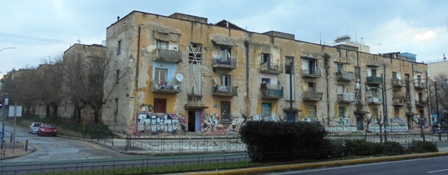
Πολυκατοικίες της Αλεξάνδρας και του Νέου Κόσμου
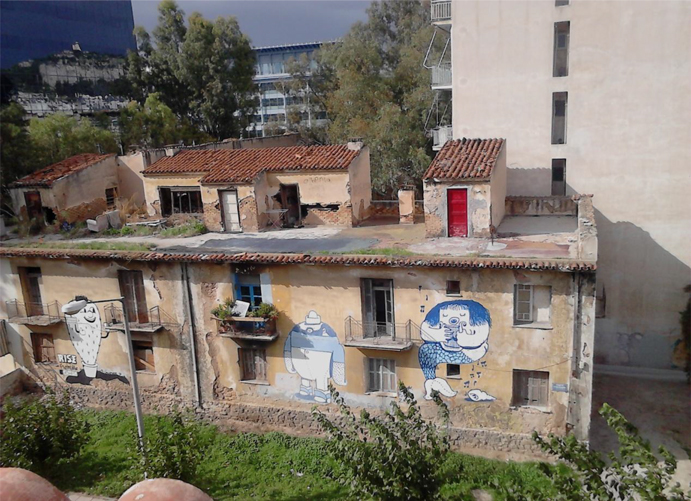
Πολυκατοικίες της Αλεξάνδρας και του Νέου Κόσμου
